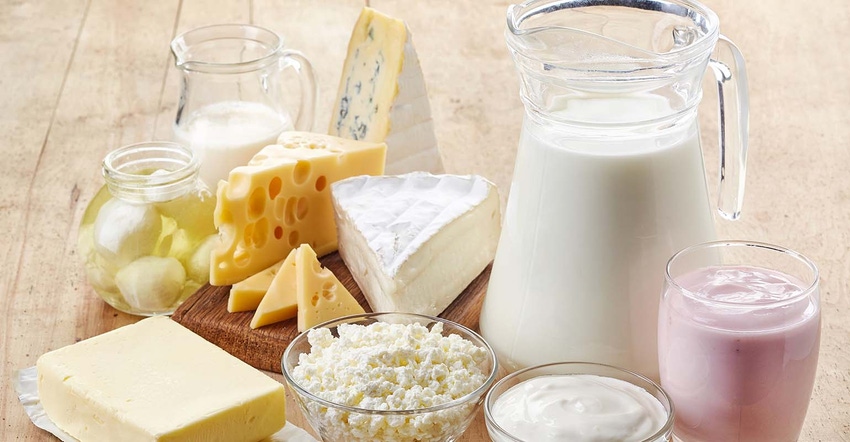
There is a seasonal tendency for dairy demand to kick into gear this time of year. With kids back in school, milk demand is strong. With football fans back in full force now that Covid restrictions have lessened, fans are tailgating, having parties in their homes, or are simply enjoying the games at home on the couch.
No matter how you enjoy the weekend usually there is some sort of delicious snack within reach, and odds are, that snack includes some sort of dairy product. At any football party I’ve attended so far this fall, tantalizing tailgate appetizers included some sort of delicious dip that incorporated sour cream or cream cheese, with the go-to staple being a huge cheese tray.
Proof of this increased seasonal demand was seen last week in the dairy industry as the spot cheese block/barrel average jumped 11.3750 cents to finish at $1.9250/lb., the highest weekly close in two months after finding support around $1.80/lb just weeks prior.
According to the dairy team at Total Farm Marketing, “Retail demand is unchanged while food service cheese demand has improved. Mozzarella cheese sales to regional pizzamakers saw a noticeable jump.” That makes sense. Demand for pizza is likely increasing, not only for use in weekend football parties, but with overall food prices creeping higher at the grocery store some families may be incorporating a simple frozen pizza into the mix at supper time.
Demand for cheese is strong, and cheesemakers in the United States are said to be running near capacity. International demand also remains robust for most dairy products.
Solid export demand
U.S. dairy exports in July totaled 236,683 metric tons. This figure was up 9,470 metric tons from July of 2021 but is down 19,005 metric tons from the previous month. Spot butter exports were up an impressive 64% year over year to a new 8-year high! Yet interesting to note, cheese exports hit a five-month low at 37,265 metric tons. Even so, the figure was still up 2% year over year.
Increasing milk supply
Overall milk production has been on a slight uptrend. U.S. milk production in July totaled 18.3 billion pounds, up 0.3% from the same month last year. This is the second month in a row to show a growth in year-over-year production (after starting the year with five reports being lower production year over year).
Milk production per cow averaged 2,033 pounds, up 19 pounds from the same month last year. Total milk cows on farms in the U.S. came in at 9.42 million head which is 67,000 less than July of last year, but up 1,000 head from the previous month. With the next milk production report coming out on Sept. 19, milk prices may hold steady into the weekend.
Currently October Class III milk futures have solid support underneath at $21.00. With spot cheese finding solid buying entering a seasonally strong time period, there are reasons to be optimistic on milk in the short-term. Overhead resistance on October milk is just up at $22.00. Monday’s milk production report may shed light on the next move for dairy.
Reach Naomi Blohm at 800-334-9779, on Twitter: @naomiblohm, and at [email protected].
Disclaimer: The data contained herein is believed to be drawn from reliable sources but cannot be guaranteed. Individuals acting on this information are responsible for their own actions. Commodity trading may not be suitable for all recipients of this report. Futures and options trading involve significant risk of loss and may not be suitable for everyone. Therefore, carefully consider whether such trading is suitable for you in light of your financial condition. Examples of seasonal price moves or extreme market conditions are not meant to imply that such moves or conditions are common occurrences or likely to occur. Futures prices have already factored in the seasonal aspects of supply and demand. No representation is being made that scenario planning, strategy or discipline will guarantee success or profits. Any decisions you may make to buy, sell or hold a futures or options position on such research are entirely your own and not in any way deemed to be endorsed by or attributed to Total Farm Marketing. Total Farm Marketing and TFM refer to Stewart-Peterson Group Inc., Stewart-Peterson Inc., and SP Risk Services LLC. Stewart-Peterson Group Inc. is registered with the Commodity Futures Trading Commission (CFTC) as an introducing broker and is a member of National Futures Association. SP Risk Services, LLC is an insurance agency and an equal opportunity provider. Stewart-Peterson Inc. is a publishing company. A customer may have relationships with all three companies. SP Risk Services LLC and Stewart-Peterson Inc. are wholly owned by Stewart-Peterson Group Inc. unless otherwise noted, services referenced are services of Stewart-Peterson Group Inc. Presented for solicitation.
The opinions of the author are not necessarily those of Farm Futures or Farm Progress.
About the Author(s)
You May Also Like






